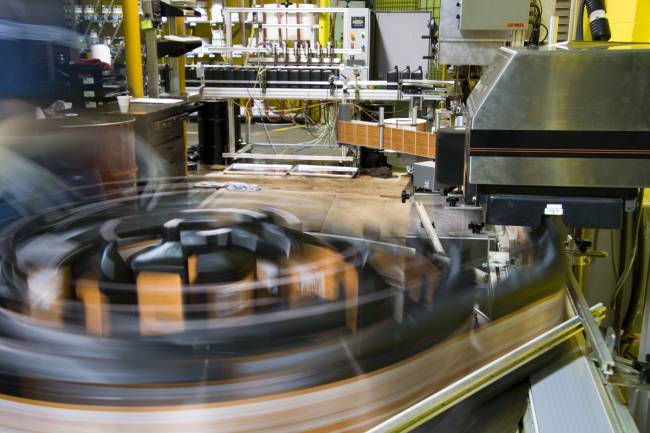Commenting on the latest CIPS UK Manufacturing Purchasing Managers’ Index which has fallen to 46.2, Mike Thornton, national head of manufacturing at RSM UK, said: “The manufacturing PMI in December continued to show signs of stability at 46.2, down only marginally from 47.2 in December. With the backlogs of work index rising to 39.5, the highest level in five months, and the new orders index reaching 46.6, the highest level since May 2023, the sector continues to show signs that are reason for cautious optimism.
“This outlook should be further fuelled through economic conditions becoming less volatile and interest rates stabilising, both creating more stable foundations for long-term investment. However, headwinds remain as the industry is still in a period of stagnation, coupled with low consumer confidence and unemployment rates increasing.”

He added: “The industry is well into its second year of contraction. The suite of individual policies announced in the Autumn Statement, including the launch of the Advanced Manufacturing Plan and the decision to make full expensing permanent, were therefore welcome news for the sector. Government can still do more to capitalise on the opportunity to take a more holistic approach to supporting industry, and manufacturers will be hoping that an industrial strategy is announced alongside the Spring Budget.”
Tom Pugh, economist at RSM UK, said: “The drop in the S&P/CIPS Manufacturing PMI to 46.2 in December suggests that growth in the manufacturing industry had a subdued end to the year. Indeed, growth in the economy as a whole probably stagnated in Q4 following a weak October.
“However, it will make more pleasant reading for the Bank of England. The weak economic environment meant that the employment index fell to 46.1, indicating that employment growth remains weak. What’s more, the input prices balance also remained well below 50 at 47.5, indicating that price pressures are continuing to ease. That will be complimented by the stabilisation in output prices at 50.1.
“Overall, the PMIs paint a picture of a subdued manufacturing sector that is feeding through to lower employment growth and slowing inflation. If this weakness is reflected in the official data over the next few months, it would suggest that the Monetary Policy Committee may be able to begin to cut interest rates in June or even as early as May.”
- SEO Powered Content & PR Distribution. Get Amplified Today.
- PlatoData.Network Vertical Generative Ai. Empower Yourself. Access Here.
- PlatoAiStream. Web3 Intelligence. Knowledge Amplified. Access Here.
- PlatoESG. Carbon, CleanTech, Energy, Environment, Solar, Waste Management. Access Here.
- PlatoHealth. Biotech and Clinical Trials Intelligence. Access Here.
- Source: https://www.logisticsit.com/articles/2024/01/02/manufacturers-enter-2024-on-knife-edge-as-output-falls-in-december
- :has
- :is
- 1
- 2023
- 2024
- 39
- 46
- 50
- a
- Able
- added
- advanced
- alongside
- also
- an
- and
- announced
- approach
- ARE
- AS
- At
- Autumn Statement
- Balance
- Bank
- Bank of England
- BE
- becoming
- begin
- below
- both
- budget
- by
- CAN
- cautious
- committee
- conditions
- confidence
- consumer
- continued
- continues
- continuing
- contraction
- coupled
- Creating
- Cut
- data
- December
- decision
- do
- down
- Drop
- Early
- ease
- Economic
- Economic Conditions
- Economist
- economy
- Edge
- employment
- end
- England
- Enter
- Environment
- Even
- Fallen
- Falls
- feeding
- few
- five
- following
- For
- Foundations
- from
- full
- further
- Government
- Growth
- had
- head
- headwinds
- highest
- holistic
- hoping
- However
- HTTPS
- if
- in
- Including
- increasing
- index
- indicating
- individual
- industrial
- industry
- inflation
- input
- interest
- Interest Rates
- into
- investment
- IT
- ITS
- jpg
- june
- latest
- launch
- less
- Level
- long-term
- Low
- lower
- make
- Manufacturers
- manufacturing
- manufacturing industry
- Manufacturing sector
- May..
- meant
- mike
- Monetary
- Monetary Policy
- monetary policy committee
- months
- more
- National
- New
- news
- next
- october
- of
- official
- on
- only
- Opportunity
- Optimism
- or
- orders
- Outlook
- output
- over
- paint
- period
- permanent
- picture
- plan
- plato
- Plato Data Intelligence
- PlatoData
- pmi
- policies
- policy
- price
- Prices
- probably
- purchasing
- Rates
- reaching
- Reading
- reason
- reflected
- remain
- remained
- remains
- rising
- Said
- Second
- sector
- should
- show
- Signs
- since
- Slowing
- spring
- Stability
- stable
- STAGNATION
- Statement
- Still
- Strategy
- suggest
- Suggests
- suite
- Supporting
- Take
- that
- The
- therefore
- this
- Through
- to
- Uk
- unemployment
- volatile
- weakness
- welcome
- WELL
- were
- which
- whole
- will
- with
- Work
- would
- year
- zephyrnet











